Colors of wires in electrics: standards and labeling rules + methods for determining the conductor
To facilitate the work of electricians, the isolation of cable products is subject to certain standards of color marking. When connecting a multicore cable, the core can be identified by the color of the polymer sheath and it can be understood with which contact it should be connected.
Different colors of wires in the electrics, established by the provisions of GOST, help to speed up the installation process and ensure electrical safety. Agree, an understanding of color coding is useful to every homemaster.
We offer you to understand the designations of electrical wiring, find out GOST standards and learn to read letter codes of wires on diagrams. In addition, we will tell you how to check the correspondence of the connected core to its purpose using an indicator screwdriver or a multimeter.
The content of the article:
What is said in GOST and PUE about color marking
The main document to rely on in production or cable acquisitionis GOST 31947-2012. Before its appearance, there was no uniformity and order in the field of color designation of electrical wiring.
Until now, in old houses you can find wires in the same shell, the color of which does not determine whether it is connected - “phase”, “zero” or “earth”.
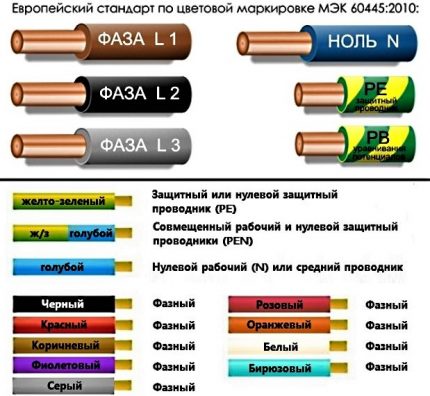
The GOST document indicated above indicates that the insulation of cable products should be different in color. A certain shade should cover the wire in a continuous layer - from beginning to end. It is impossible for one wire at the beginning of the bay to be blue, and the end to white; intermittent coloring is also prohibited.

The regulatory documents also contain recommendations on the use of various schemes for 3-wire, 4-wire and 5-wire cables.
For example, in the manufacture of 3-core cables, the following combinations are welcome:
- brown - blue - green / yellow;
- brown - gray - black.
If the cable consists of 4 cores, then two typical painting options are also recommended:
- brown - gray - black - green / yellow;
- brown - gray - black - blue.
The schemes for a 5-wire wire are as follows:
- brown - gray - black - green / yellow - blue;
- brown - gray - 2 black - blue.
The blue color indicates the "zero" core.
It is not recommended to use only two colors - red and white.
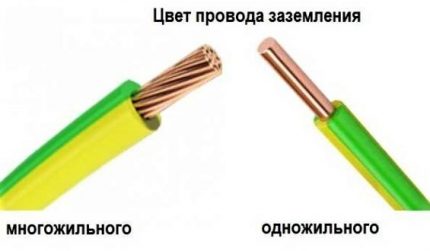
The color should be applied firmly and be clearly distinguishable.
If we turn to the second important document for electricians - PUE, then in 1.1.1.29 and 1.1.1.30 you can also find information about the color of the phase-zero-ground wires. More precisely, the data are not written there, but there is a reference to GOST P 50462-92, which has long been replaced by the more recent edition of GOST R 50462-2009, which is valid today.
The material complies with the information set forth in GOST 31947, but there are some clarifications. For example, wires that perform a dual function should be specially painted: if the zero worker is combined with the zero protective, then along the entire length it is painted in blue, and on the edges it has green-yellow stripes.

Thus, all colors except blue (cyan) and green / yellow can be used to paint the insulation of the phase conductor. White and red colors fall into this group, which for some reason are not recommended for use by the 2012 edition of GOST.
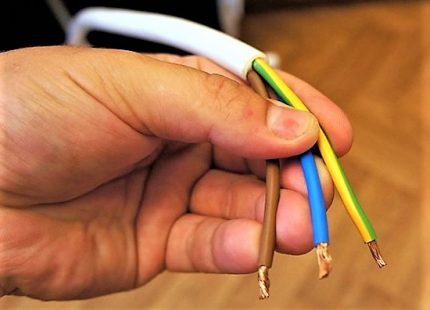
Appendix A to GOST R 50462 has a table in which you can find the letter designations of all colors. For example, the phase conductor of a 1-phase circuit (L) is brown, the color code is BN. Letter codes are used for black and white copies of schemes that do not use different colors.
Core marking for electrical solutions
No wonder at the beginning of the article the idea was voiced that the color designation of conductors greatly simplifies the installation process.
If you do it yourself electrical wiring in the apartment or private house, select the wires according to the standards, when connecting electrical devices, installing automatic protection, distributing the wires in the junction boxes, you do not need to double-check where the phase, zero, ground are the color of insulation tells you about.
A few examples of wiring when labeling is important:
There are cables with a large number of cores, the coloring of which does not seem appropriate. An example is SIP, which uses a different method for determining conductors. One of them is marked with a small groove along its entire length.The relief vein usually performs the function of a zero conductor, the rest play the role of linear ones.
To distinguish the veins, they are marked with tape, heat shrink, letter designations, which are applied with multi-colored markers. And in the process of electrical work, they necessarily make a call - additional identification.
Checking the connection
Unfortunately, not all electricians strictly comply with the rules and, when connected, are mistaken in choosing a conductor. Therefore, when hanging a chandelier, installing a socket or other wiring device, it is better to additionally check whether the insulation of each core corresponds to its purpose.
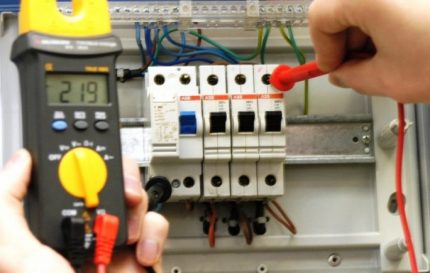
For identification, installers use two methods: the first is using an indicator screwdriver, and the second is using a tester or multimeter. The phase is usually determined with a screwdriver, and neutral and zero are used with measuring instruments.
How to use the indicator?
Even simple devices like indicator screwdrivers are different. Some of them are equipped with a small button, others are triggered automatically when a metal rod and a current-carrying core or contact are connected.
But in all models without exception, an LED is lit, ignited under voltage.
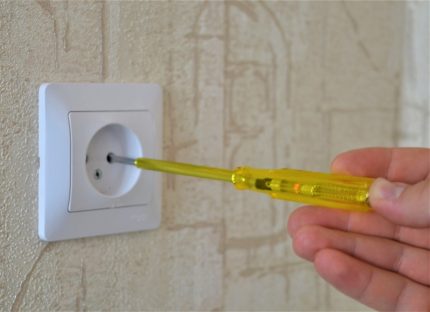
A screwdriver is a convenient tool for determining the phase conductor. To find out if the working core, the metal core of the screwdriver must be gently touch the exposed wire.
If the LED lights up, the core is energized. The absence of a signal indicates that it is ground or zero.
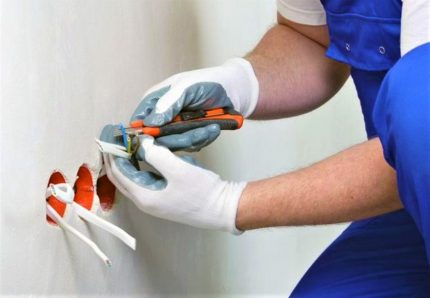
The verification procedure is performed with one hand, therefore, the second is free. It is also better to use it - for example, to fix the wires. But it is strictly forbidden with the second hand to touch the exposed parts of conductors or metal objects located nearby (pipes, fittings).
Tester Application Rules
A tester or multimeter is always included with the electrician. He has to work with connecting cores in indoor electrical installations and when assembling the electrical panel. If the wiring was mounted for a long time, the color marking of the wires can be neglected.
Even if the insulation colors seem to be sustained, it is not a fact that they are connected in accordance with all the rules.

Before measurements, you should study the instructions that accompany all measuring instruments.
The procedure is approximately the following:
- we set a value that is obviously greater than the expected voltage, for example, 260 V;
- we connect probes in the necessary sockets;
- touch probes to two conductors - presumably phase and neutral;
- repeat the procedure with another pair of conductors.
The combination of phase-zero conductors should produce a result close to 220 V. It will always be higher than the phase-ground pair.
On sale there are both digital, modern devices, and obsolete, with arrows and scale values. Using digital is more convenient. Before self-installation of electrical devices, we recommend that you learn to use either an indicator screwdriver or a multimeter - you should not rely only on the color of the cores.
The ability to use a multimeter is useful to the home master and to check the voltage in the outlet. Detailed instructions for using the tester are given in this article.
Conclusions and useful video on the topic
Common color coding standards:
Labeling methods in addition to color:
When all wires are the same color - check with a test lamp:
Color coding of wires is a great way to identify the wire during its installation. However, in the process of working with already installed cables, you should not rely only on the appearance of the conductors, as they can be connected incorrectly.
Be sure to use additional methods for determining the conductors, and if you can not change the wires themselves, then you need to mark them with colored tape or alphabetic characters.
Have something to supplement, or have questions about color coding? You can leave comments on the publication, participate in discussions and share your own experience in identifying conductors. The contact form is located in the lower block.

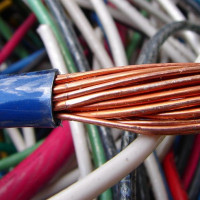 Types of cables and wires and their purpose: description and classification + decoding of marking
Types of cables and wires and their purpose: description and classification + decoding of marking  RJ45 twisted pair cable pinout: wiring diagrams and crimping rules
RJ45 twisted pair cable pinout: wiring diagrams and crimping rules  Wire stripping tool: all about cable strippers
Wire stripping tool: all about cable strippers 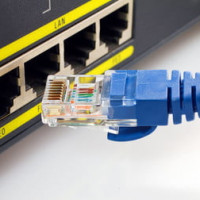 How to crimp an RJ-45 Internet cable with your own hands: ways + instructions for crimping an Internet connector
How to crimp an RJ-45 Internet cable with your own hands: ways + instructions for crimping an Internet connector 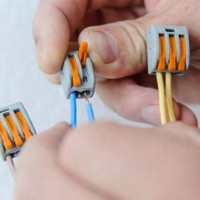 Clips for wires: existing types of clamps + detailed connection instructions
Clips for wires: existing types of clamps + detailed connection instructions 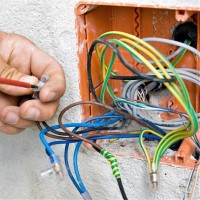 What is a vvg cable: decryption, characteristics + subtleties of cable selection
What is a vvg cable: decryption, characteristics + subtleties of cable selection  How much does it cost to connect gas to a private house: the price of organizing gas supply
How much does it cost to connect gas to a private house: the price of organizing gas supply  The best washing machines with dryer: model rating and customer tips
The best washing machines with dryer: model rating and customer tips  What is the color temperature of light and the nuances of choosing the temperature of the lamps to suit your needs
What is the color temperature of light and the nuances of choosing the temperature of the lamps to suit your needs  Replacement of a geyser in an apartment: replacement paperwork + basic norms and requirements
Replacement of a geyser in an apartment: replacement paperwork + basic norms and requirements
The indicator screwdriver is convenient to use, but you need to be careful with it. Most of them are designed to work with a voltage of 220 volts, and sometimes 380 volts are connected to the house. In this case, the screwdriver may miss the charge and you will be shocked. Yes, and there are a lot of counterfeit products on the market. You should choose carefully and purchase an indicator in trusted stores.
Good afternoon, Anton.
I fully support your warnings regarding the acquisition, use of voltage indicators.
I want to emphasize - professional electric power industry uses equipment, devices, indicators, which are divided into categories: “up to 1000 volts” and “over 1000 volts”. For the home, of course, you need to purchase indicators of the first category.
From your comment, it follows that you started working in home electrical networks. To improve qualifications, to get useful information that insures against electrical injury, I advise you to read the "Rules for the installation of electrical installations", "Safety rules for the operation of electrical installations."
I’ll add: the “correct” voltage indicator has a passport that limits the scope of the device. In the screenshot I brought a part of such a Passport of the E119.2 pointer.